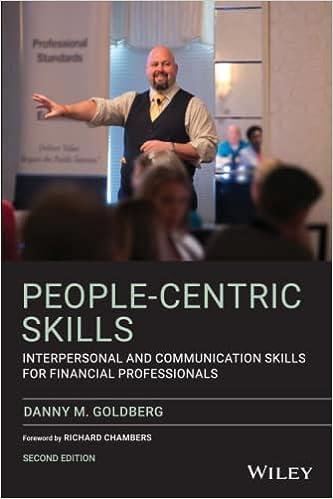Comments You are probably famillar with this type of setup if you have had any introduction to game theory. We take the two players as making independent, self-interested decisions. The information is common knowledge and each player is rational and able to predict the other player's choices. The payoffs to the players are interdependent. What one player does affects the other plaver and they each know this. The players make their decisions in a sequence: Taggart chooses number of tracks and then Coase chooses number of flelds: Accounting and internal control have a role when the players merge to form a single firm. No longer independent decision-makers, they are bound together in a single firm. The chapter describes a firm as requiring an allocation of dedision rights, performance measures, and reward structure. Internal control is part of the artful aliocation and enforcement of decision rights. Accounting can be part of the process of measuring performance. See the explanation in the Module 4 lectures for a solution strategy. Problem statement Coase Farm grows soybeans near property owned by Taggard Rallroad. Taggart can bulld zero, one, or two rallroad tracks adjacent to Coase Farm, yielding a net present value of \$0, \$9 million, or \$12 million. Coase Farm can grow soybeans on zero, one, or two fields, yielding a net present vlue of \$0, \$15 million, or $18million before any environmental damages inflicted by Taggart trains. Environmental damages inflicted by Taggart's trains are $4 million per field per track. Coase Farm's payoffs as a function of the number of fields it uses to grow soybeans and the number of tracks that Taggart bullds are shown below. Value of Coase Farm (in millions) as a Function of the Number of Fields Planted and the Number of Train Tracks As an example, the $7 In the prior table is because Coase has one fleld worth $15 million and experiences two tracks on the field for a total of \$8 million in environmental damage. It is prohibitively expensive for Taggard Railroad and Coase Farm to enter into a long-term contract regarding either party's use of its land. Required A. Suppose TaRgard Railiroad cannot be held liable for the damages its tracks inflict on Coase Farm. Show that Taggart Rallroad will build two tracks and Coase Farm will plant soybeans on one field. B. Suppose Taggard Railroad can be held fully liable for the damages that its tracks inflict on Coase Farm. Show that Taggart Railroad will build one track and Coase Farm will plant soybeans on two fields. C. Now suppose Taggart Railroad and Coase Farm merge. Show that the merged firm will build one track and plant soybeans on one field. D. What are the implications of the merger for the organizational architecture of the newly merged firm in terms of decision rights, performance measurement, and employee compensation? In your discussion, pay particular attention to internal control and accounting








